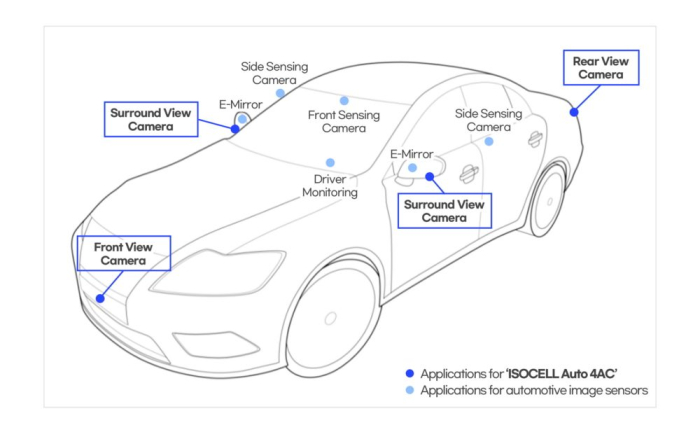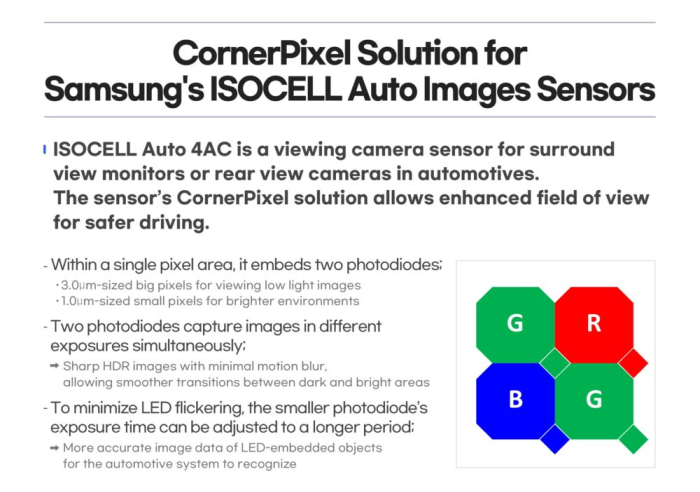Tech
Samsung courts image sensor leader Sony with new automotive products
Launches ISOCELL Auto 4AC, first ISOCELL image sensor tailored for automotive applications
By Jul 13, 2021 (Gmt+09:00)
2
Min read
Most Read
LG Chem to sell water filter business to Glenwood PE for $692 million


Kyobo Life poised to buy Japan’s SBI Group-owned savings bank


KT&G eyes overseas M&A after rejecting activist fund's offer


StockX in merger talks with Naver’s online reseller Kream


Mirae Asset to be named Korea Post’s core real estate fund operator



Samsung Electronics Co., the world’s second-largest image sensor maker, is courting industry leader Sony Corp. with its new line of automotive products.
Samsung on July 13 unveiled the ISOCELL Auto 4AC, its first ISOCELL image sensor tailored for automotive applications. Image sensors are semiconductors that convert light, or image information, received through camera lenses into electrical digital signals. The ISOCELL Auto 4AC will be used in vehicles set for release in the second half of this year.
“Starting with the ISOCELL Auto 4AC, we plan to expand our automotive sensor lineup to areas such as camera monitor systems (CMS), autonomous driving and in-cabin monitoring,” said Samsung’s executive vice president of sensor business Chang Duckhyun in a statement.
The launch is a part of Samsung’s bid to overtake Sony’s market share in the global image sensor sector, according to industry sources. Sony captures some 45% share of the global image sensor market, trailed by Samsung at about 20%.

Image sensors for automobiles are higher value-added products than those for mobile phones, with stronger growth. The automotive image sensor market is expected to increase 11% per annum from this year to 2024 in line with the fast-growing self-driving car segment, nearly double the 6.8% growth forecast for the image sensor market overall.
The ISOCELL Auto 4AC will be used for rear-view cameras and surround-view monitors of a vehicle and offers high-definition resolution images. Its CornerPixel technology embeds two in a single pixel area - a 3.0µm pixel for viewing low light images, and a 1.0µm pixel placed at the corner of the big pixel for brighter environments. The sensor offers up to 120-decibel high dynamic range with minimal motion blur, allowing smoother transitions between dark and bright areas while preserving more detailed visuals of the road ahead.
To minimize light-emitting diode (LED) flickering, the smaller photodiode’s exposure time can be extended, preventing pulsing LED light from flickering on the camera screen. This delivers a more pleasant viewing experience for the driver and more accurate image data on LED-embedded objects for the automotive system to recognize.
Write to Sin-Young Park at nyusos@hankyung.com
Jongwoo Cheon edited this article.
More to Read
-
 Image sensorsSamsung Electronics to raise image sensor output to overtake Sony
Image sensorsSamsung Electronics to raise image sensor output to overtake SonyDec 09, 2020 (Gmt+09:00)
3 Min read
Comment 0
LOG IN


